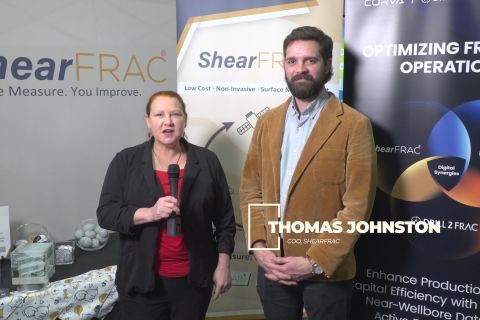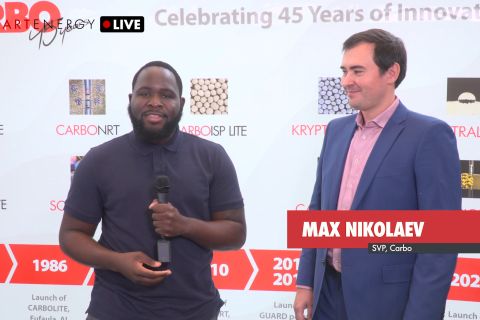Simmons & Company International’s James P. Baker leads the firm’s midstream and downstream corporate finance practice. With more than 20 years of industry experience, Baker has completed more than 100 transactions for the energy investment bank, including mergers, acquisitions, divestitures, fairness opinions and capital raises. Baker, who holds an MBA from the University of Texas, sat down with Midstream Business to discuss the industry’s financial future.
While it’s true there’s no crystal ball that will foretell which direction the midstream director might take in 2013, all indications point to continued growth in both the public and private sectors, Baker says. Here, he lays out the changes, challenges and opportunities he expects to see in the space as the year unfolds.
MIDSTREAM: Let’s start out with master limited partnerships (MLPs). Do you see any changes coming to the MLP structure?
BAKER: The MLP structure has evolved significantly over the last few decades, starting in 1981 with the first MLP: Apache Oil. The proliferation of MLPs—whether it be in real estate assets or restaurants—really exploded in the 1980s.
In 1987, the government stepped in and limited what would qualify as an MLP on a go-forward basis. While most of the existing MLPs were grandfathered, the legislation limited the structure primarily to natural resource-related activities. Over the past decade, we’ve seen the scope of energy-related MLPs grow from the more traditional midstream infrastructure company to include other types of energy companies, such as coal and upstream names.
When the government expanded the definition of MLP-qualifying income in 2008, the industry saw another wave of energy-related industries embracing the MLP structure—including renewables. More recently, we've seen oil service companies and refiners pursue an MLP structure over the more traditional C-corp structure. So the evolution continues to take place, and the definition of what could be structured as an MLP continues to grow.
We’ve also seen the MLP structure evolve recently with the emergence of variable-rate MLPs. Historically, you had a minimum quarterly distribution with a tier structure and incentive distribution rights (IDRs) in place that allowed for additional cash flow to go to an MLP’s general partner as different cash flow hurdles were met. The new variable rate MLPs have a different structure whereby whatever distributable cash flow is generated by the entity in a given quarter goes to the unitholders. It's a structure that makes sense for entities that have higher volatility with respect to their cash flow.
We've seen pretty wide acceptance with that structure, so I would say the evolution continues, not only on the types of businesses, but also on the structures that the market is willing to accept.
MIDSTREAM: Are MLPs a backdoor way for companies to get around higher taxes?
BAKER: I think a lot of the companies that are currently structured as MLPs should have never been structured as a corporation to begin with. The reason I say that is they were originally part of an integrated Cc-corp, which, by their very nature, have a higher cost of capital than a partnership structure that only has one level of taxation versus two.
I would say that in order to develop the infrastructure needed in the U.S. to help us work toward energy independence, having the low cost of capital of the partnership structure makes sense. It’s actually a benefit to the industry to have it, and I don't really view it as a backdoor way of companies getting around higher taxes.
MIDSTREAM: There’s some concern and confusion about putting MLPs into Individual Retirement Account (IRAs). Do MLPs make sense for IRAs? And if so, how can this best be accomplished?
BAKER: There are a couple of different ways to answer this. The total returns to people who have owned MLPs—both retail and institutional investors—have been so great for such a long time that investors are willing to look through some of the friction associated with owning an MLP. Some of the friction is with respect to tax-reporting forms, as well issues with owning the units in IRAs due to unrelated business taxable income.
For most retail investors, the UBTI [unrelated business taxable income] is not an issue in holding an MLP security in an IRA. If you had your choice between a taxable account and an IRA because of the tax-advantaged nature of the MLP security, you would rather have it in a taxable account.
But if an IRA is the only alternative, they can make sense for a number of investors, although I would caveat that by saying everyone should consult his own tax advisor.
One other way investors are gaining exposure to MLP securities in IRA is through the ETF [exchange-traded funds] structure, which actually allows investors to invest in the broader MLP universe and not face the issues associated with the UBTI.
MIDSTREAM: What are the advantages, and perhaps disadvantages, of launching an MLP initial public offering (IPO)?
BAKER: There are obviously benefits associated with being a public company, including the liquidity your publically traded shares offer and the ability to raise capital more efficiently and more effectively in the marketplace, often times when the market is in your favor.
Some of the disadvantages, though, that come along with being public include the additional reporting standards and the costs associated with those reporting standards, additional costs to complete annual audits and things of that nature which everyone has gone through over the past several years.
MIDSTREAM: What is your forecast for merger and acquisition activity for 2013?
BAKER: We see activity picking up. Of course, it has been picking up significantly since 2009. A lot of it is associated with the development of the unconventional-resource plays here in North America. MLPs are playing a significant role in that.
We also see a lot of private capital backing entrepreneurial management teams. Once they get to a certain point in their cycle, it makes sense for them to be brought to market, and the MLP structure is a very effective way to bring these private companies to market. We also see a number of areas across the energy space—particularly among MLPs—where we think consolidation may make sense. We think that we'll see a significant amount of private and public merger activity in 2013.
MIDSTREAM: What are the advantages of private versus public?
BAKER: In the markets we're seeing right now, we have a significant amount of private equity out there, a substantial amount of long capital and a number of good opportunities. Whether it’s private or public equity, we're seeing those opportunities getting funded, so it's a good market for both I would say.
The advantage of operating a private entity is oftentimes the ability to move quickly and to do so off the radar screen, versus operating in the public marketplace where your activity is monitored closely by both the research community and the broader marketplace. But, as I’ve mentioned, the public-capital markets typically provide a cheaper source of capital.
MIDSTREAM: With all the money being spent on the midstream build-out throughout North America, what, in your opinion, is the best way to raise capital?
BAKER: It’s kind of an “all-in” market that we have right now. There's a tremendous amount of organic development that is taking place in the midstream sector to support the country’s efforts in working toward energy independence. As such, private capital provided by private equity funds and hedge funds supporting entrepreneurial management is one source of capital.
As for public capital, there are really two primary buckets for publically traded MLPs. The retail component obviously presents one avenue for raising public equity, but institutional investors, who have become increasingly active in the MLP space, can also serve as an additional equity fundraising vehicle for publically traded MLPs.
MIDSTREAM: Is there a particular area where you see investments heading with respect to asset types?
BAKER: In the midstream sector, there's a tremendous amount of investment opportunities in the marketplace today. The opportunities are not limited to gas gathering and processing entities. Due to the significant basis differentials currently in place across North America, we’re seeing more and more opportunities to invest in new pipelines moving natural gas, natural gas liquids (NGLs) and crude oil to different markets. Along that same value chain, you will always have to develop the terminals and storage to support this new pipeline infrastructure.
Beyond your more typical midstream infrastructure investment opportunities, unconventional-resource production in North America is reaching the point where the exporting of some of these oil and gas resources may make sense. As such, we expect for investments to be made in export facilities as well. Across the energy value chain, we're seeing a lot of development.
MIDSTREAM: In your opinion, are there any major challenges that the industry will face moving forward?
BAKER: I think some of the main challenges are government- and regulatory-related. Where does the EPA [Environmental Protection Agency] come out on certain issues with respect to developing unconventional natural resources, such as the fracing issue? And how heavy-handed will the government be in trying to curtail or have a hand in slowing up what seems to be a tidal wave of development and opportunity for the country?
I think that if the government would truly commit to energy independence and allow basic market and economic principles to guide the decision-making processes across the industry, the broader energy space would certainly stand to benefit.
MIDSTREAM: Congratulations on Simmons & Co. being recognized by the Houston Chronicle as a great place to work. What makes Simmons’ working environment so positive?
BAKER: Simmons is the oldest independent energy-focused investment bank in the U.S. We advise clients. We do that through our people, and our assets leave the door every day. Without question, the most important thing to us is the people.
One of the things we've developed over decades of being in business is a culture that is second to none. We hire and employ the best and brightest and support them with a culture that keeps them around. In an industry known for a decent amount of turnover, most of our senior bankers have been with the firm since graduate school. I think our culture is certainly unique within the industry and sets us apart from other banks.
Michelle Thompson can be reached at mthompson@hartenergy.com or 713-260-1065.
Recommended Reading
ShearFRAC, Drill2Frac, Corva Collaborating on Fracs
2024-03-05 - Collaboration aims to standardize decision-making for frac operations.
Exclusive: Carbo Sees Strong Future Amid Changing Energy Landscape
2024-03-15 - As Carbo Ceramics celebrates its 45th anniversary as a solutions provider, Senior Vice President Max Nikolaev details the company's five year plan and how it is handling the changing energy landscape in this Hart Energy Exclusive.
The Need for Speed in Oil, Gas Operations
2024-03-22 - NobleAI uses “science-based AI” to improve operator decision making and speed up oil and gas developments.
Chevron Hunts Upside for Oil Recovery, D&C Savings with Permian Pilots
2024-02-06 - New techniques and technologies being piloted by Chevron in the Permian Basin are improving drilling and completed cycle times. Executives at the California-based major hope to eventually improve overall resource recovery from its shale portfolio.
Oceaneering Won $200MM in Manufactured Products Contracts in Q4 2023
2024-02-05 - The revenues from Oceaneering International’s manufactured products contracts range in value from less than $10 million to greater than $100 million.





